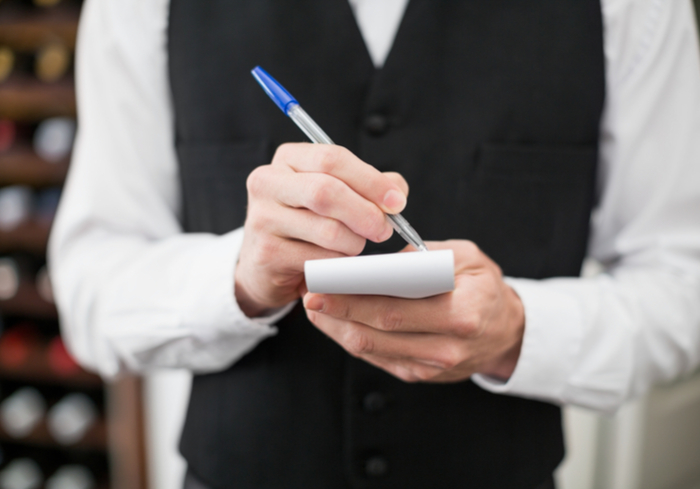
To ensure that their customers can find a server when they want a second round of drinks or another menu item, restaurants and hospitality concepts are turning to new innovations. Richmond, Virginia’s Tang & Biscuit, a shuffleboard social house, has call buttons – provided by a company called Tablee – that diners can press to ask for service. When customers press the buttons, waiters are notified via smartwatches.
David Gallagher, Tang & Biscuit’s founding partner, brought his hospitality concept to fruition by converting a warehouse that he bought two years ago into an entertainment venue. The space’s primary activity is shuffleboard, but the space also has a full menu and 52-foot bar. On Thursday through Sunday nights, Gallagher said the space is packed, with a capacity of about 700 people. In all, the space encompasses about 18,000 square feet.
Tang & Biscuit is designed so that diners don’t sit at the table the entire time. They might meander around the space while playing table games or ping pong, among other social activities. Since customers are moving around so much, it can be a challenge to provide quick and considerate service. “It’s hard to capture the needs from a service perspective,” Gallagher told PYMNTS in an interview. He said the call button system, however, “gave us a tool that allowed us to communicate with our service staff when someone has a service need.”
The Customer Experience
In restaurants, customers typically go to a table and sit down before waiters arrive to take their orders. Although Gallaher uses that workflow in his establishment, the buttons have been a good solution in the case of additional orders.
He also noted that the button provides his management team with valuable information. The Tablee technology tracks the time between when a button is pushed and when the service staff attends to a customer’s need. Gallagher said his management team is then able to see if the restaurant is complying with its own service values. (At Tang & Biscuit, service staff are trained to tell diners that they can press the button if they need anything, and that they will come right over.)
One of the challenges to providing service is gauging how much attention customers actually want. “Some people expect non-stop visitation and others want to be more left alone,” according to Gallagher. The button allows customers to indicate how frequently they want to be visited. In addition, the staff can serve as more of a “concierge” instead of constantly watching over tables. That is also important for venues that have a lot of space, like Gallagher’s, and need to be efficient with their use of staff.
The Call Button Market
In another concept available to restaurants and other hospitality venues, Kallpod offers one- or three-button devices that let customers ask for assistance from staff. Kallpod COO Steven Barrow Barlow told PYMNTS in a previous interview that the technology highlights an establishment’s commitment to service and allows guests to have a say in their service.
Similar to Gallagher’s view of the technology, Barlow noted that his company’s device empowers the guest, as the diner doesn’t have to raise her hand or use eye contact to bring a server to the table. Barlow also described the technology as “an icebreaker that brings the guest closer to service staff.” The technology was tested in quick-service restaurant (QSR) chain Chick-fil-A earlier this year, with the goal of reinforcing a culture of service.
Devices like those from Kallpod and Tablee can help diners feel more connected with their servers, and provide the convenience and flexibility of being able to call for an extra round or an additional food order without having to wait for service.